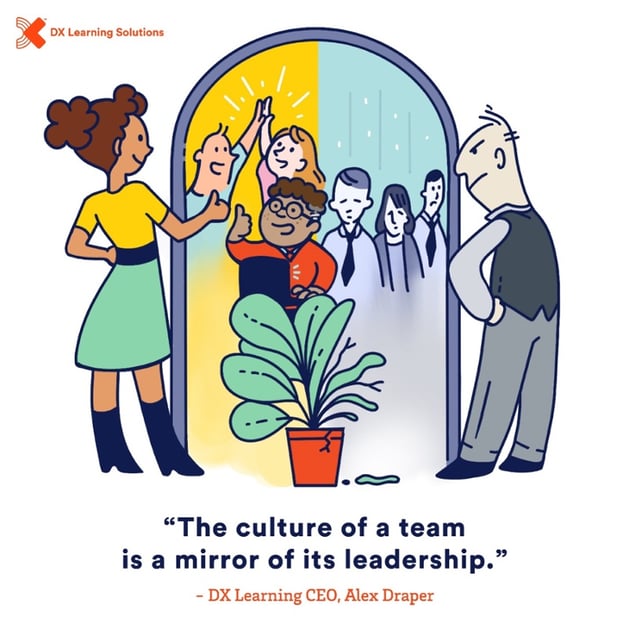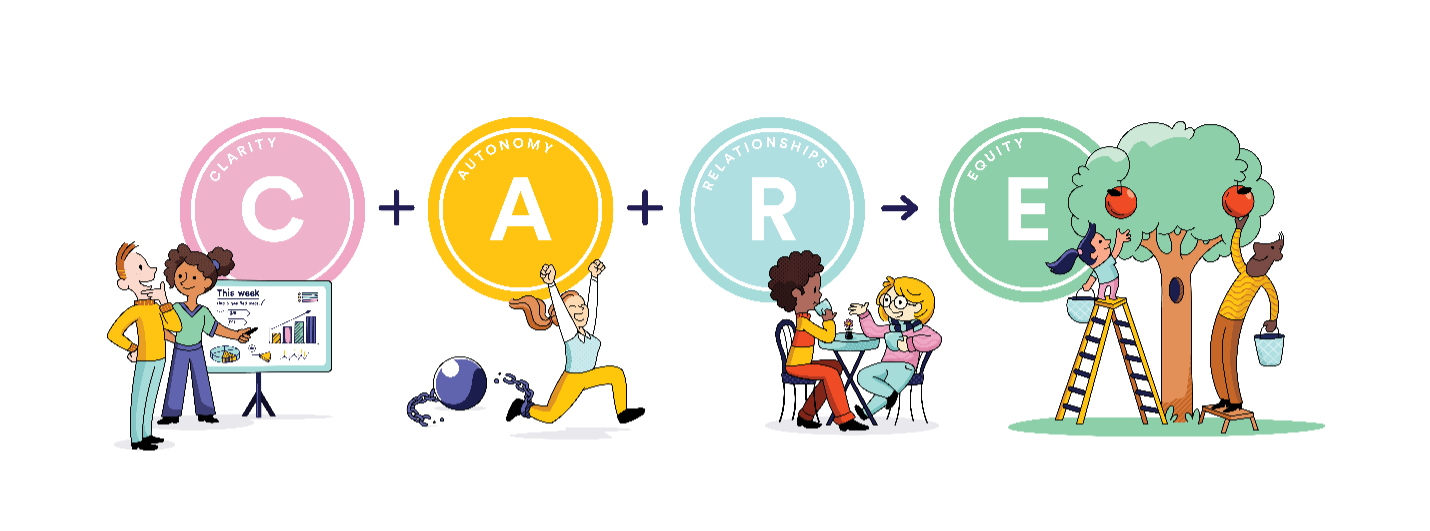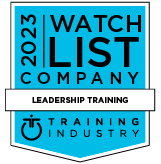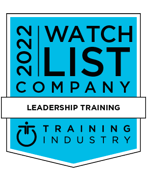A Comprehensive Guide to Organizational Culture Change

Contents
Organizational culture change is a slippery fish. Values posters with bold one liners like ‘integrity, inclusion, teamwork’ are hung, but just gather dust. A company-wide email from the CEO who just fired 500 employees about the need for more teamwork is sent out, but just makes employees feel more misunderstood. New technology is wheeled out like a shiny car on a game show podium, but senior leaders won’t budge from the old, familiar ways. Ring any bells?
It’s a sad fact that 75% of organizational culture change efforts fail to generate meaningful results (BCG). Changing organizational culture requires a shift in the way people think, behave and view culture. It has to feed into the bloodstream, and the subconscious.
Learning how to change organizational culture is your Mount Everest, so you’d better come prepared, or risk ending up dangling on the side of the mountain.
Understanding Organizational Culture and the Need for Change
The Essentials of Organizational Culture
Learning how to change organizational culture starts with committing to people-centric values.

The simplest way to view culture is that culture is a mirror of leadership. Due to basic mirror neurons, if the leaders acts in a certain way consistently, over time those they serve will also act in similar ways. If I value feedback, and give it every day, others will eventually also value feedback every day. If I value myself and act selfishly, my team will become selfish and territorial. So, what we value drives how we behave, which drives how others behave. It all starts with values.
So, if you have well-documented values, that means teaching leaders how to effectively lead with those values front and center, and if they don’t, there is the door. If they do, they get rewarded, as do their teams.
Due to the young seeing people-first culture as the #1 factor in where they work, we need to make sure our leaders lead with a people first mindset. Our research has shown us that Clarity, Autonomy, Relationships, and Equity® (CARE), are the human skills to get the hard stuff done. Making sure your values embrace these human skills will ensure that your leaders put people-first through their actions.
Training leaders how to CARE is a non-negotiable in changing your culture. Training everyone to CARE, so leaders intentionally give, and employees lead from whatever seat they are in to ask for what they are not getting, is where you get higher performing cultures. Whereas top-down change only sees a 34% success rate, a people-centric approach can increase the success rate by up to 58% (Gartner).
Making sure there are elements of Clarity, Autonomy, Relationships and Equity in your values to match the fundamental brain cravings of all humans = human first culture

Clarity ensures everyone knows the game-plan and is on the same line of the same page and not different chapters; autonomy lets creativity soar through flexibility and trust; relationships build a sense of belonging where human connection is a daily habit; and equity ensures a fair playing field throughout changing company culture and making sure everyone human is treated the way they want to be treated.
Edgar Schein, a renowned figure in the fields of organizational culture and career development, defined culture as: “The pattern of basic assumptions that a group has invented, discovered or developed, to cope with its problems of external adaptation or internal integration, that have worked well and are taught to new members as the way to perceive, think, feel and behave.” So essentially, if your culture is bad, it’s literally a contagious disease. If it’s a culture of CARE, then it’s a place for humans to thrive as their brains get the ingredients they crave.
Values drive behavior, and culture is a mirror of leadership. Leaders need to walk the talk and be held accountable to drive workplace culture change. When leaders embody those values, they create a positive ripple effect throughout the whole organization, and employees will feel inspired to emulate them. Everyone leads. So, team members need to speak up early and often, about what is working and what is not.
To make changing company culture stick, leaders need to hold others accountable too, especially their peers, bosses, and that toxic high performer on their team. Champions of good behaviour should be rewarded, and leaders shouldn’t shy away from doling out consequences for bad behavior. In this positive reinforcement loop, positive actions get repeated, and negative ones are stomped out. Basic psychology. Reward the good and consequence the bad.
Identifying Signs That Your Culture Needs to Change
“The greatest danger in times of turbulence is not the turbulence; it is to act with yesterday’s logic.” – Peter Drucker
You start losing good people, and your employee turnover resembles a high-speed revolving door with double-digit spins.
NPS scores of customers are static or declining.
Qualitative data from engagement surveys are bad.
Glass door is lighting up, in a bad way.
It feels like new hires leave before the welcome cake is even stale, but long-term folk who have weathered the storm stick around.
There’s no diverse representation of minorities.
The canary in the coal mine can be screaming for organizational culture change, but often goes unnoticed. Your CX can’t be higher than your EX. It’s like noticing subtle cracks in the foundations – it starts small, but if these cultural blind spots are left unattended, culture will come crashing down.
Steps to Initiate Organizational Culture Change
Setting Clear Objectives for Change
Gen Y aren’t just seeking a desk; they’re on a quest for meaning and purpose, to drive positive change at a company whose values align with their own (Deloitte). And they will make up around 75% of the global workforce by 2025 (CEO Magazine).
Without good people who are treated right, the seeds of business growth struggle to find fertile ground in the long term.
Conduct an organizational culture assessment. Be honest: what needs to change? Ask your people – get that quantitative and qualitative data! You might not like what you hear but it needs to be said and really heard. People might feel let down, hurt, scared, burnt out. It’s up to leaders to turn that feedback into proactive steps to win back hearts and minds.
Your organizational culture change goals should be SMART. It takes years to change. Don’t expect change to happen overnight. It takes years to align the behaviors of your people to a new set of values. Those values need to link to CARE: Clarity, Autonomy, Relationships, and Equity. What do we want to achieve by changing culture? How can we align individual roles and objectives to the wider organizational purpose and strategy? How will we measure the organizational culture change?
Developing a Strategic Culture Change Plan
Changing culture is a 5-to-6-year plan and it starts at the top.
If you do not break negative patterns and norms, culture will not change. Engage the whole organization to create a blueprint for organizational culture change. Employees will know you care about their opinions and experiences, and harnessing diverse viewpoints and ideas will help to get a clear view of blind spots.
Clear and consistent communication is your compass; keep dialogue open, honest and frequent. Transparency is the key to unlocking understanding. So, tell a story about changing workplace culture: illustrate the current culture's shortcomings and the utopia you’re headed towards in a relatable and emotional way. Make it fun, exciting, and empowering.
Prioritize changing workplace culture goals based on their impact, urgency, and feasibility, and set milestones and clear metrics to track progress. Every little win along the way should be celebrated to keep people motivated in the long game.
Changing organizational culture is a marathon, not a sprint. The beauty lies in the journey of watching those sown seeds sprout and grow into mighty oaks. But when your organization embraces the brave cravings of CARE in their values, and leaders implement CARE as a set of daily habits, they are equipped with the tools and human skills to start making an immediate impact that has a long-lasting effect.
Overcoming Challenges in Changing Organizational Culture
The old-school top-down approach to organizational culture change is one of the leading reasons why programs fail (Forbes).
You absolutely can teach an old dog new tricks, but it takes work, time, and CARE, when the dog is the entire company.
Addressing Resistance to Change
This is the really hard part of changing organizational culture. Particularly when dealing with high performers who've been doing things a certain way forever.
If employees don’t see the value in workplace culture change, and feel forced into adopting it, you’ll see half-hearted efforts that may only happen when managers are around.
To successfully break down entrenched habits and norms, make sure that everyone understands the reasons for changing organizational culture and have opportunities to contribute their ideas.
If your high performers refuse to dance to the new tune, and after being given a chance to get on board and change, you’re still seeing all the same behaviour, they might need to find a different dance floor.
Maintaining Momentum and Commitment
Make organizational culture change part of the strategy and performance management system; part of how you track progress and hire and fire.
When scouting talent, don't just be wowed by an amazing CV. Craft questions that dive into cultural compatibility, their values and teamwork approach. You’re not just hiring employees; you’re building a work family. Every person needs to be on the right wavelength and understand the cultural expectations. This is about future employees being a cultural add, not a cultural fit.
Recognize and celebrate behaviors that align with the culture heartbeat and use performance reviews to provide constructive feedback and course correct. It’s about personal and collective growth, not just hitting numbers.
Parting ways is tough, there’s no sugar-coating it. But if someone isn’t living that workplace culture change, it might be best for both parties.
The CARE Playbook as a Framework for Culture Change
“If you always do what you did, you always get what you got.” – Marian Diamond
Applying Clarity in Culture Transformation
This means ensuring a shared understanding of crystal-clear expectations to reach collective goals. No one should be left wondering who, what, when, why, or how, when it comes to organizational culture change.
It’s a long road that would make Frodo Baggins gulp. But when people are invested in the change, attitudes shift. Make it clear how everyone can be involved in changing culture, and how teams will benefit. Being transparent about the processes, communication, decisions, and progress, will keep a foot on the accelerator. It nudges them in the right direction without overwhelming or panicking them. Nothing worse than being in different books, let alone different chapters. Being on the same line of the same page gets the better results every time.

Fostering Autonomy in a Changing Culture
Organizations shouldn’t feel like a dictatorship, with orders and decisions cascading down from the executive elite. “Everyone is coming back to work for 4 days a week. No choice.” People aren’t going to run and go for gold if you won’t even let them walk.
When leaders foster Autonomy in a changing culture and trust their team to do what needs to get done on their own terms, they light a fire in people, and stir a sense of trust and ownership.
When you feel empowered, and prove your capability, you start to believe in yourself more. Your productivity soars, whether you’re in the office or working from home.
Building Relationships during Cultural Shifts
We all crave comfort and safety. We want to belong to a tribe. We need to show we care by connecting with your own team on a human level. When you improve your emotional intelligence, and stimulate the growth mindset, it doesn’t take long to see the business results of psychological safety.
During organizational culture change, relationships become the binding force. Emotionally intelligent, supportive leaders create a culture of inclusion, trust and collaboration – employees support each other through ups and downs, everyone feels safe to share their two cents, and the team rallies together during the workplace culture change, not because they have to, but because they genuinely want to! No relationships, no bueno!
Something as simple as a manager asking a team member, “What motivates you?”, or “What don’t I know about you that would help our relationship?”, or “What are you dealing with outside of work?” – this behavior signals that every person matters. Or informal feedback to employees every week – it shows managers are supporting their development as they align to the changing organizational culture. To value a human, they need to know where they stand. Honesty is key, even if its bad news.
It’s not just about adapting; it’s about thriving together.
Ensuring Equity in the New Cultural Landscape
It’s common for voices in higher management positions to be heard and even prioritized over front-line workers. This, however, goes against the very idea of human-centered change.
Ensuring Equity means proportionately providing resources and attention to those who need it. Leaders need to provide everyone with a great experience, making sure no one feels left out or overlooked. And we’re not just talking about new additions; that applies to employees who’ve stuck by you through the hardest times!
Create a safe and trusting environment where everyone feels heard and psychologically safe to be their authentic selves. Facilitating an inclusive and collaborative dialogue around the organizational culture change will see psychological safety blossom. It’s as simple as, “treat people how they want to be treated.”
Make sure CARE isn’t just a poster on the wall, but a guiding force that shapes every decision and is hard-wired into your leaders and values. Every human is different. The best cultures embrace that. The best cultures have the leaders who can adapt to the needs of their teams versus try to clone themselves.
Get in touch to learn how CARE can help you to assess where your culture is needs some attention, break down toxic patterns, and change the mindsets of the whole organization aligned to a more human workplace that sets your organization up for long term success.
FAQs
What constitutes organizational culture change?
It’s about creating a people-centric culture of CARE. Clarity ensures everyone knows the game-plan, autonomy lets creativity soar, relationships build a sense of belonging, and equity ensures a fair playing field throughout workplace culture change.
What are the key steps in initiating a culture change in an organization?
Engage with employees to gauge how they feel, and where the culture is at. Set SMART culture change objectives, aligned with CARE, and develop a 5–to-6 year strategic culture plan, applying CARE as a framework for culture change.
How can the impact of organizational culture change be measured?
Talk to people! Observe them. Get their feedback. Use quantitative and qualitative data to assess how well everyone understands and aligns with CARE. Keeping a constant track of progress makes course correction much easier than dealing with a big crash at the end of the line. To maximize ROI throughout an organizational culture change, DX has a series of pre and post tools to ensure CARE is a permanent part of how a leader leads and how change is realized.
Insights

Subscribe to Our Monthly Newsletter!
For managers and talent professionals who truly believe in putting people first, the CARE to Win blog is your gateway to the latest insights on human-centric leadership. Join us as we champion the people first movement.
Need some time apart? Are we emailing you too often? Just give us your feedback, and we promise we’ll respond. We really do care. And if it’s still too much, just unsubscribe. It’s cool.
.jpg) Alex Draper
Alex Draper


